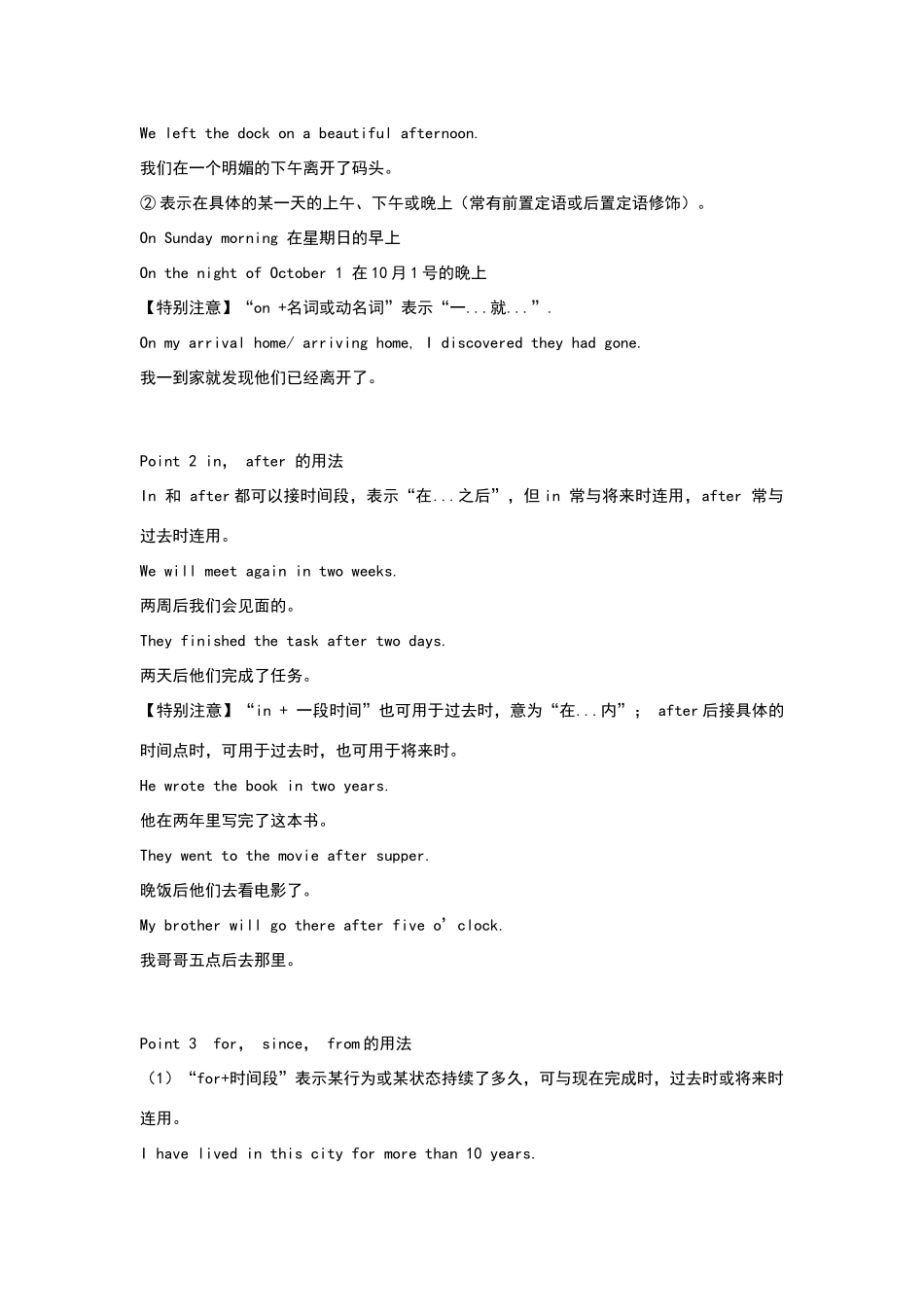分考点 1 表示时间的介词Point 1 at, in, on 的用法(1)at 的用法At 表示时间点,用于具体的时刻(几点,正午,午夜,黎明,拂晓,日出,日落等),或把某一时间看作某一时刻的词之前以及某些节假日的词之前。at 6:00 在 6 点钟At noon 在中午At daybreak 在拂晓At down 在黎明At Christmas 在圣诞节【特别注意】在以下的时间短语中,at 表示时间段。At dinner time 在(吃)晚饭时At weekends/ the weekend 在周末(2)in 的用法① 表示时间段,与表示较长一段时间的词搭配,如年份,月份,季节,世纪,朝代,还可以用于泛指的上午、下午、傍晚等时间段的词前。In 2024 在 2024 年In April 在四月In the 1990s 在 20 世纪 90 年代In Tang Dynasty 在唐朝In the morning 在上午② 后接时间段,用于将来时,表示“在一段时间之后”。The film will begin in an hour. 电影将于一个小时之后开始。【特别注意】当时间名词前有 this, that, last, next,every, each,some 等词修饰时,通常不用任何介词。This morning 今日上午 last year 去年(3)on 的用法① 表示在特定的日子、具体的日期、星期几、具体的某一天或某些日子。On September the first 在 9 月 1 号On National Day 在国庆节We left the dock on a beautiful afternoon.我们在一个明媚的下午离开了码头。② 表示在具体的某一天的上午、下午或晚上(常有前置定语或后置定语修饰)。On Sunday morning 在星期日的早上On the night of October 1 在 10 月 1 号的晚上【特别注意】“on +名词或动名词”表示“一...就...”.On my arrival home/ arriving home, I discovered they had gone. 我一到家就发现他们已经离开了。Point 2 in, after 的用法In 和 after 都可以接时间段,表示“在...之后”,但 in 常与将来时连用,after 常与过去时连用。We will meet again in two weeks.两周后我们会见面的。They finished the task after two days.两天后他们完成了任务。【特别注意】“in + 一段时间”也可用于过去时,意为“在...内”; after 后接具体的时间点时,可用于过去时,也可用于将来时。He wrote the book in two years.他在两年里写完了这本书。They went to the movie after supper.晚饭后他们去看电影了。M...


